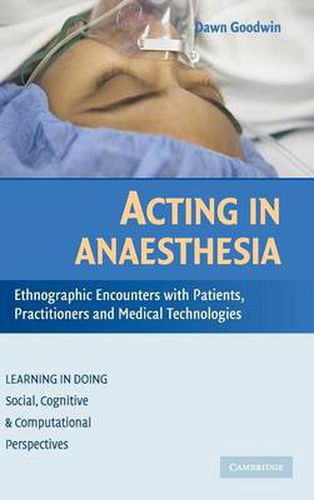Readings Newsletter
Become a Readings Member to make your shopping experience even easier.
Sign in or sign up for free!
You’re not far away from qualifying for FREE standard shipping within Australia
You’ve qualified for FREE standard shipping within Australia
The cart is loading…






In recent years, evidence-based medicine (EBM), clinical governance and professional accountability have become increasingly significant in shaping the organisation and delivery of healthcare. However, these notions all build upon and exemplify the idea of human-centred, individual action. In this book, Dawn Goodwin suggests that such models of practice exaggerate the extent to which practitioners are able to predict and control the circumstances and contingencies of healthcare. Drawing on ethnographic material, Goodwin explores the way that ‘action’ unfolds in a series of empirical cases of anaesthetic and intensive care practice. Anaesthesia configures a relationship between humans, machines and devices that transforms and redistributes capacities for action and thereby challenges the figure of a rational, intentional, acting individual. This book elucidates the ways in which various entities (machines, tools, devices and unconscious patients as well as healthcare practitioners) participate, and how actions become legitimate and accountable.
$9.00 standard shipping within Australia
FREE standard shipping within Australia for orders over $100.00
Express & International shipping calculated at checkout
In recent years, evidence-based medicine (EBM), clinical governance and professional accountability have become increasingly significant in shaping the organisation and delivery of healthcare. However, these notions all build upon and exemplify the idea of human-centred, individual action. In this book, Dawn Goodwin suggests that such models of practice exaggerate the extent to which practitioners are able to predict and control the circumstances and contingencies of healthcare. Drawing on ethnographic material, Goodwin explores the way that ‘action’ unfolds in a series of empirical cases of anaesthetic and intensive care practice. Anaesthesia configures a relationship between humans, machines and devices that transforms and redistributes capacities for action and thereby challenges the figure of a rational, intentional, acting individual. This book elucidates the ways in which various entities (machines, tools, devices and unconscious patients as well as healthcare practitioners) participate, and how actions become legitimate and accountable.